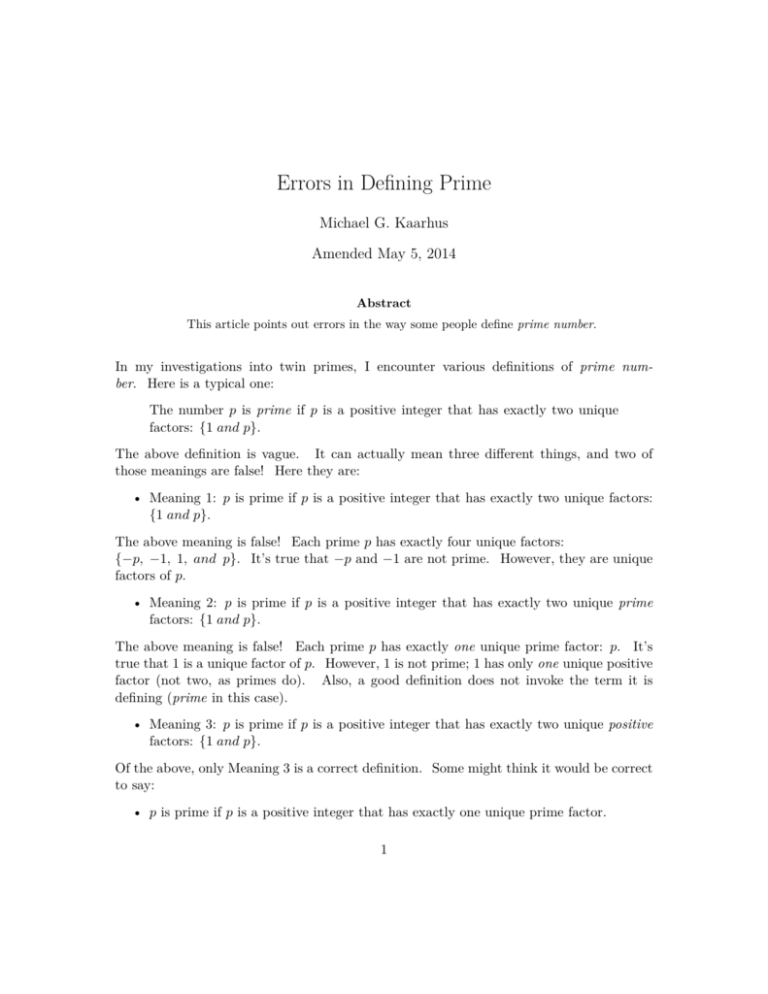
Errors in Defining Prime
Michael G. Kaarhus
Amended May 5, 2014
Abstract
This article points out errors in the way some people define prime number.
In my investigations into twin primes, I encounter various definitions of prime number. Here is a typical one:
The number p is prime if p is a positive integer that has exactly two unique
factors: {1 and p}.
The above definition is vague. It can actually mean three different things, and two of
those meanings are false! Here they are:
• Meaning 1: p is prime if p is a positive integer that has exactly two unique factors:
{1 and p}.
The above meaning is false! Each prime p has exactly four unique factors:
{−p, −1, 1, and p}. It’s true that −p and −1 are not prime. However, they are unique
factors of p.
• Meaning 2: p is prime if p is a positive integer that has exactly two unique prime
factors: {1 and p}.
The above meaning is false! Each prime p has exactly one unique prime factor: p. It’s
true that 1 is a unique factor of p. However, 1 is not prime; 1 has only one unique positive
factor (not two, as primes do). Also, a good definition does not invoke the term it is
defining (prime in this case).
• Meaning 3: p is prime if p is a positive integer that has exactly two unique positive
factors: {1 and p}.
Of the above, only Meaning 3 is a correct definition. Some might think it would be correct
to say:
• p is prime if p is a positive integer that has exactly one unique prime factor.
1
Kaarhus
Errors in Defining Prime
But that isn’t correct, either. The primes share that definition with other kinds of numbers. For instance, the squares of primes have exactly one unique prime factor – one that
is used twice. For instance, the unique factors of 169 are {-169, -13, -1, 1, 13, 169}. Of
those, 13 is the only prime factor; even though it is applied twice, it is only one number.
Errors in Defining Prime
Copyright © 2013 Mike Kaarhus
All Rights Reserved
2









